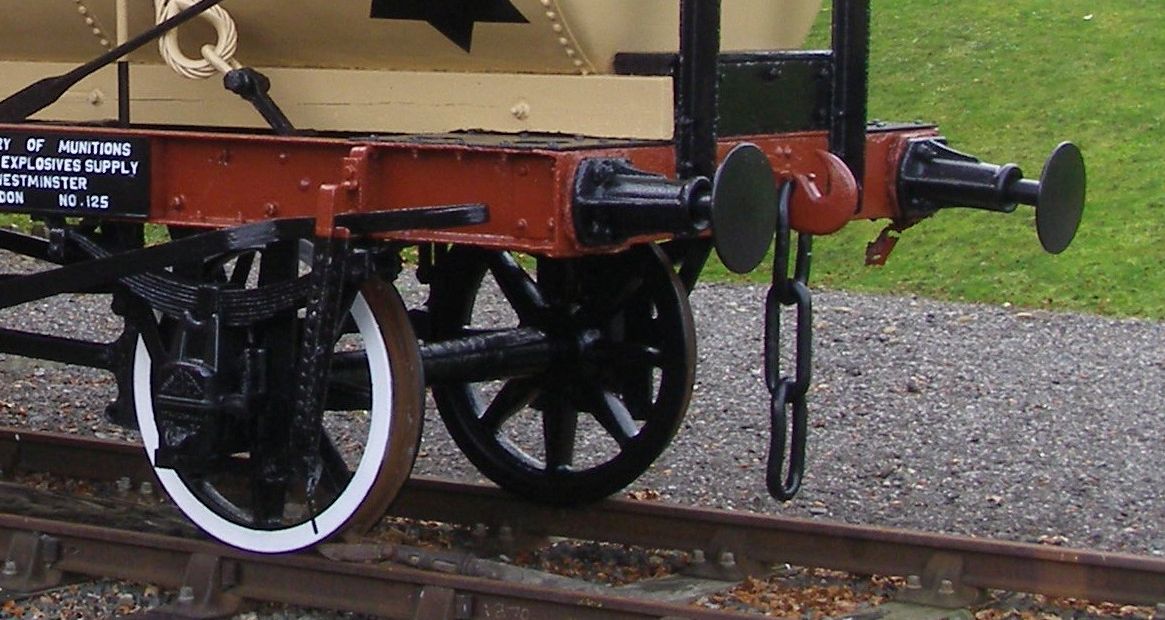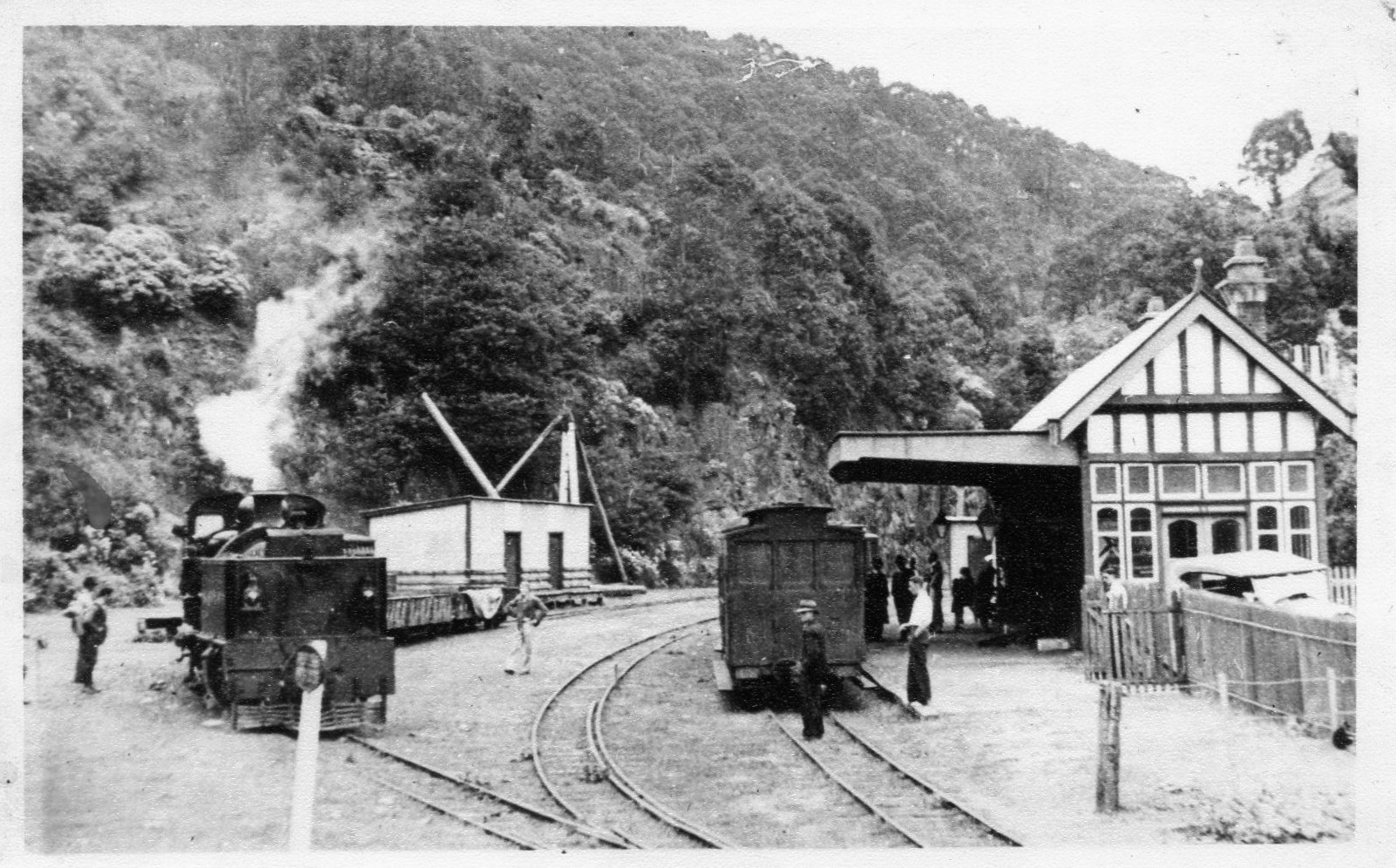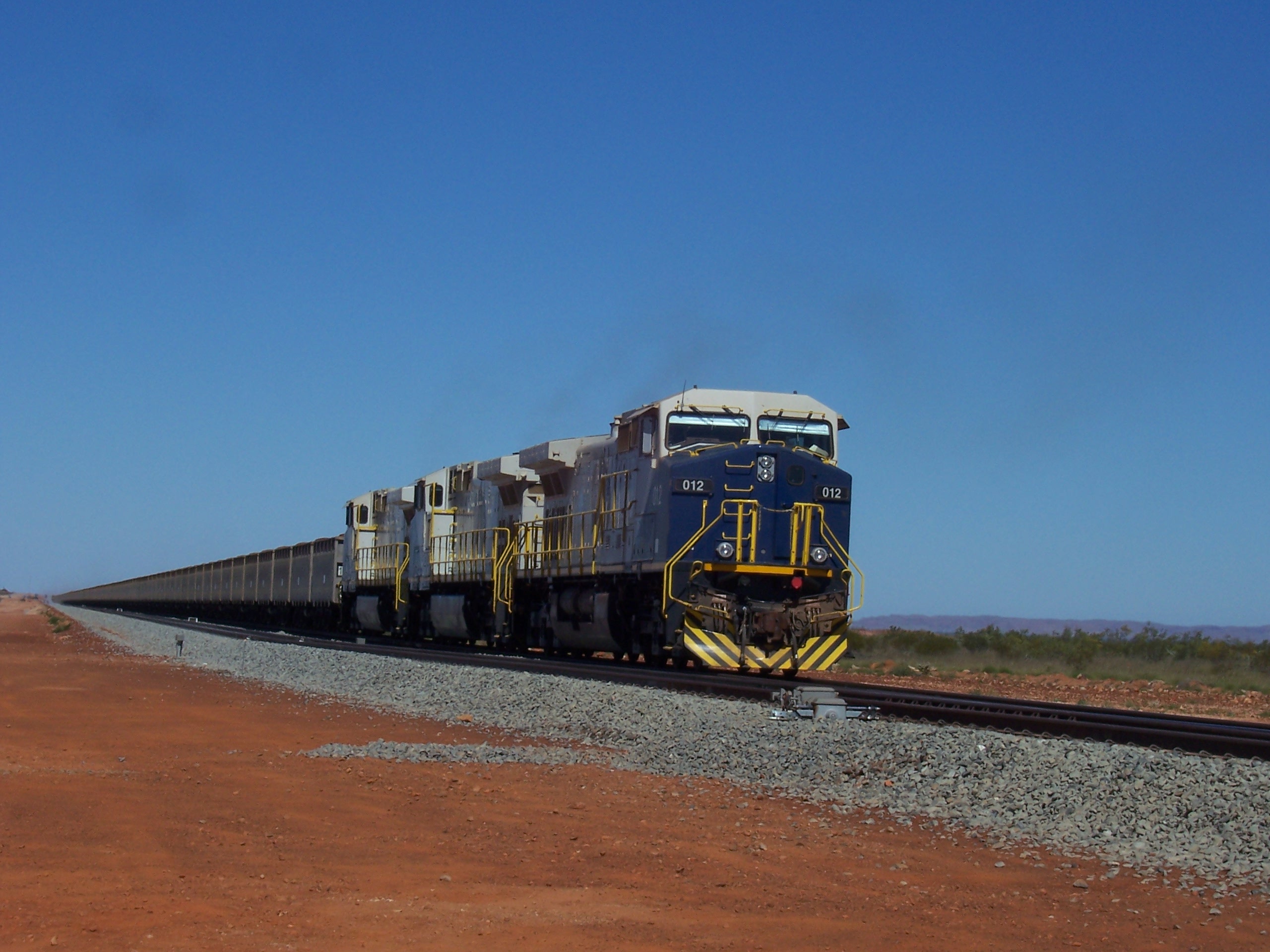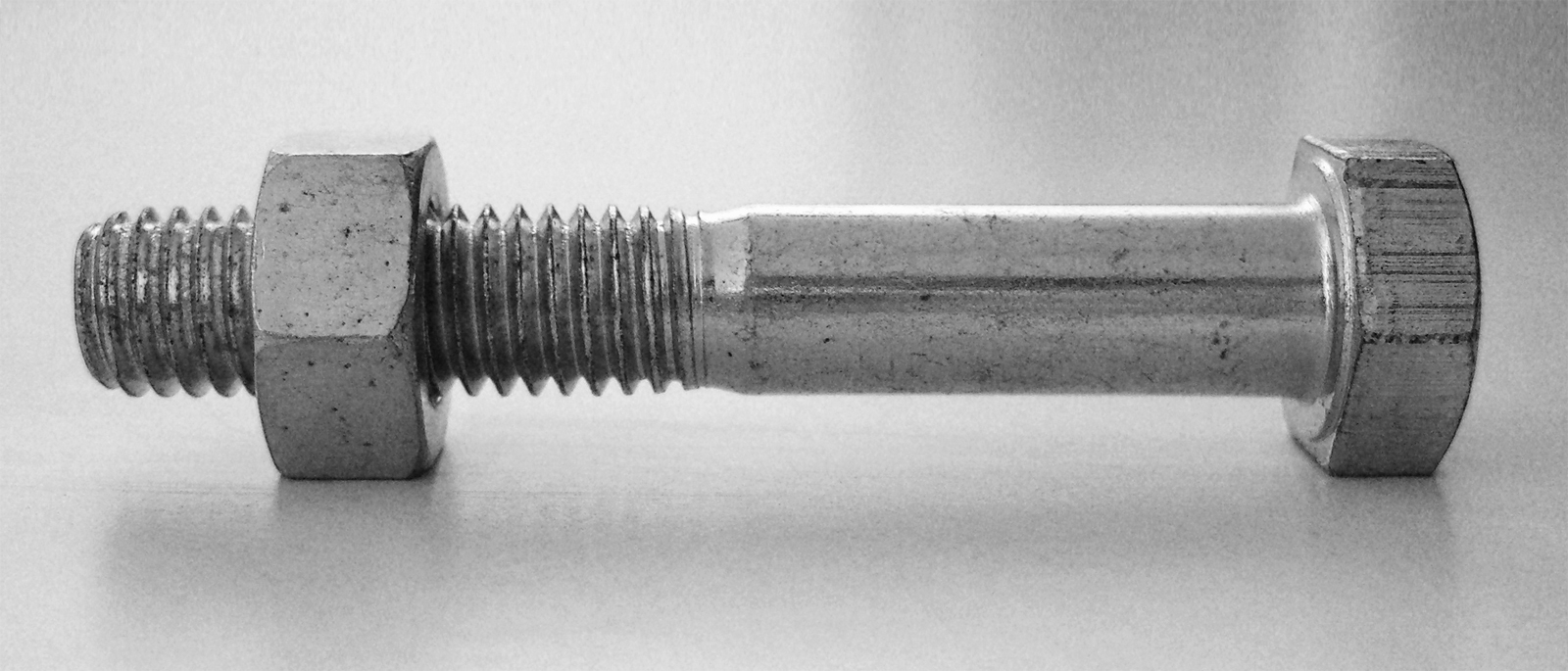|
Knuckle Coupler
Knuckle couplers are a semi-automatic form of railway coupling that allow rail cars and locomotives to be securely linked together without rail workers having to get between the vehicles. Originally known as Janney couplers (the original patent name) they are almost always referred to as Knuckles in the US and Canada (regardless of their actual official model name, nowadays generally various AAR types in North America), but are also known as American, AAR, APT, ARA, MCB, Buckeye, tightlock (in the UK) or Centre Buffer Couplers. There are many variations of knuckle coupler in use today, and even more from the past, some variants of knuckle couplers include: Janney: the American original, a rather finicky coupler; reportedly annoying to make open and close. This design was obsolete by 1900. MCB: In the latter 1880's the Master Car Builder's Association (MCB) were faced with choosing a standard from the multitude of mutually incompatible automatic coupler designs then on offer. The ... [...More Info...] [...Related Items...] OR: [Wikipedia] [Google] [Baidu] |
Railway Coupling
A coupling or coupler is a mechanism, typically located at each end of a rolling stock, rail vehicle, that connects them together to form a train. The equipment that connects the couplers to the vehicles is the draft gear or draw gear, which must absorb the stresses of the coupling and the acceleration of the train. Throughout the history of rail vehicles, a variety of coupler designs and types have been developed worldwide. Key design considerations include strength, reliability, easy and efficient handling, and operator safety. Automatic couplers engage automatically when the cars are pushed together. Modern versions not only provide a mechanical connection, but can also couple brake lines and data lines. Different countries use different types of couplers. While North American railroads and China use Janney couplers, railroads in the former Soviet Union use SA3 couplers and the European countries use Scharfenberg coupler, Scharfenberg and Buffers and chain coupler, screw ... [...More Info...] [...Related Items...] OR: [Wikipedia] [Google] [Baidu] |
Railway Air Brake
A railway air brake is a railway brake power braking system with compressed air as the operating medium. Modern trains rely upon a fail-safe air brake system that is based upon a design patented by George Westinghouse on April 13, 1869. The Westinghouse Air Brake Company was subsequently organized to manufacture and sell Westinghouse's invention. In various forms, it has been nearly universally adopted. The Westinghouse system uses air pressure to charge air reservoirs (tanks) on each car. Full air pressure causes each car to release the brakes. A subsequent reduction or loss of air pressure causes each car to apply its brakes, using the compressed air stored in its reservoirs. Overview Straight air brake In the air brake's simplest form, referred to as a ''straight air system'', compressed air is directed to a ''brake cylinder'', causing its piston to apply force to mechanical linkage, which linkage is conventionally referred to as the ''brake rigging'' (see illu ... [...More Info...] [...Related Items...] OR: [Wikipedia] [Google] [Baidu] |
Norwegian Coupling
A Norwegian coupling or coupler (also known colloquially as a chopper coupling or claw hammer coupling), is a manually operated coupling at each end of some narrow-gauge railway rolling stock. It consists of a central buffer incorporating a hook that drops into a slot in the opposing central buffer. The system is only found on narrow gauge railways with a gauge of or less on which low speeds and train loads allow a simpler system than, for example, knuckle couplers. Norwegian couplings are not particularly strong, and may be supplemented by auxiliary chains. Not all Norwegian couplings are compatible with one another since they vary in height and width. Some may permit a hook from both rail vehicles to be in place; others may be limited to one. The Norwegian coupling was developed in Norway about 1870, when the main railway network was built to narrow gauge. During the 20th century, these lines were rebuilt to or closed. Since the rolling stock needed to be replaced, a ... [...More Info...] [...Related Items...] OR: [Wikipedia] [Google] [Baidu] |
Rail Transport In New Zealand
Rail transport in New Zealand is an integral part of Transport in New Zealand, New Zealand's transport network, with a nationwide network of of track linking most major cities in the North and South Islands, connected by inter-island rail and road ferries. Rail transport in New Zealand has a particular focus on bulk freight exports and imports, with 19 million net tonnes moved by rail annually, accounting for more than half of rail revenue. Rail transport played an important role in the opening up and development of the hinterland outside of New Zealand's predominantly dispersed and coastal settlements. Starting with the Ferrymead Railway in 1863, most public railway lines were short, built by Provinces of New Zealand, provincial governments and connected major centres to their nearest seaport (such as Christchurch and its port at Lyttelton Harbour). From the 1870s, the focus shifted to building a nationwide network linking major centres, especially during the The Vogel Era, ... [...More Info...] [...Related Items...] OR: [Wikipedia] [Google] [Baidu] |
Buffers And Chain Coupler
Buffers and chain couplers (or couplings) – also known as "buffers and screw", "screw", and "screwlink" – are the de facto International Union of Railways (UIC) standard railway coupling used in the EU and UK, and on some railways in other parts of the world, such as in South America and India, on older rolling stock. Buffers and chain couplers are an assembly of several devices: buffers, hooks and links, or turnbuckle screws. On the modern version of the couplers, rail vehicles are mated by manually connecting the end link of one chain which incorporates a turnbuckle screw into the towing hook of the other wagon, drawing together and slightly compressing the Buffer (rail transport), buffer pairs, one left and one right on each headstock. That limits slack, and lessens Shunting (rail), shunting shocks in moving trains. By contrast, vehicles fitted with the semi-automatic Janney coupler, Janney Type E coupler can experience significant jarring during mating and shunting. V ... [...More Info...] [...Related Items...] OR: [Wikipedia] [Google] [Baidu] |
Europe
Europe is a continent located entirely in the Northern Hemisphere and mostly in the Eastern Hemisphere. It is bordered by the Arctic Ocean to the north, the Atlantic Ocean to the west, the Mediterranean Sea to the south, and Asia to the east. Europe shares the landmass of Eurasia with Asia, and of Afro-Eurasia with both Africa and Asia. Europe is commonly considered to be Boundaries between the continents#Asia and Europe, separated from Asia by the Drainage divide, watershed of the Ural Mountains, the Ural (river), Ural River, the Caspian Sea, the Greater Caucasus, the Black Sea, and the waterway of the Bosporus, Bosporus Strait. "Europe" (pp. 68–69); "Asia" (pp. 90–91): "A commonly accepted division between Asia and Europe ... is formed by the Ural Mountains, Ural River, Caspian Sea, Caucasus Mountains, and the Black Sea with its outlets, the Bosporus and Dardanelles." Europe covers approx. , or 2% of Earth#Surface, Earth's surface (6.8% of Earth's land area), making it ... [...More Info...] [...Related Items...] OR: [Wikipedia] [Google] [Baidu] |
North America
North America is a continent in the Northern Hemisphere, Northern and Western Hemisphere, Western hemispheres. North America is bordered to the north by the Arctic Ocean, to the east by the Atlantic Ocean, to the southeast by South America and the Caribbean Sea, and to the south and west by the Pacific Ocean. The region includes Middle America (Americas), Middle America (comprising the Caribbean, Central America, and Mexico) and Northern America. North America covers an area of about , representing approximately 16.5% of Earth's land area and 4.8% of its total surface area. It is the third-largest continent by size after Asia and Africa, and the list of continents and continental subregions by population, fourth-largest continent by population after Asia, Africa, and Europe. , North America's population was estimated as over 592 million people in list of sovereign states and dependent territories in North America, 23 independent states, or about 7.5% of the world's popula ... [...More Info...] [...Related Items...] OR: [Wikipedia] [Google] [Baidu] |
Narrow Gauge Lines Of The Victorian Railways
The former Victorian Railways, the state railway authority in Victoria, Australia, built a number of experimental narrow-gauge lines around the beginning of the 20th century. Although all were closed by the early 1960s, parts of two have been reopened as heritage railways. Background A depression in the early 1890s brought a halt to the rapid expansion of railways in Victoria. Politicians promoted narrow-gauge lines as a way to link remote communities, particularly in hilly country, without the expense of the railways. Railway officials opposed them, citing the inconvenience and expense of a break-of-gauge. The Parliamentary Standing Committee on Railways examined 14 regions for potential railways: # Bass River District: Without recommending a specific route, the Committee considered a narrow gauge line through the Bass River district to exploit timber resources along the river, coal deposits around Kilcunda and farming around Wonthaggi, eventually recommending exami ... [...More Info...] [...Related Items...] OR: [Wikipedia] [Google] [Baidu] |
Ultimate Tensile Strength
Ultimate tensile strength (also called UTS, tensile strength, TS, ultimate strength or F_\text in notation) is the maximum stress that a material can withstand while being stretched or pulled before breaking. In brittle materials, the ultimate tensile strength is close to the yield point, whereas in ductile materials, the ultimate tensile strength can be higher. The ultimate tensile strength is usually found by performing a tensile test and recording the engineering stress versus strain. The highest point of the stress–strain curve is the ultimate tensile strength and has units of stress. The equivalent point for the case of compression, instead of tension, is called the compressive strength. Tensile strengths are rarely of any consequence in the design of ductile members, but they are important with brittle members. They are tabulated for common materials such as alloys, composite materials, ceramics, plastics, and wood. Definition The ultimate tensile strength of ... [...More Info...] [...Related Items...] OR: [Wikipedia] [Google] [Baidu] |
Fortescue Metals Group
Fortescue is a global metal mining company headquartered in Australia. Fortescue focused on iron ore mining under the name of Fortescue Metals Group (FMG) until July 2023. As of 2017, Fortescue is the fourth-largest iron ore producer in the world. The company has holdings of more than in the Pilbara region of Western Australia, making it the largest tenement holder in the state, larger than both BHP and Rio Tinto. Governance Andrew Forrest is Executive Chairman and owns a third of the company. Dino Otranto is the CEO of Fortescue's Metals division (Aug 2023–), and Mark Hutchinson is the CEO of the Energy division. Former Chief Executive Elizabeth Gaines is now global brand ambassador. Mining projects The group has two main areas of operation located within the Pilbara region of Western Australia, the Chichester Hub and Solomon Hub. Plans to develop a third, Western Hub were as of 2017 in developmental stage. In 2017 Fortescue started exploration of possible mining ten ... [...More Info...] [...Related Items...] OR: [Wikipedia] [Google] [Baidu] |
Headstock (rolling Stock)
A headstock of a Railroad car, rail vehicle is a transverse structural member located at the extreme end of the vehicle's underframe. The headstock supports the railway coupling, coupling at that end of the vehicle, and may also support Buffer (rail transport), buffers, in which case it may also be known as a buffer beam. The headstocks form part of the underframe of a locomotive or a railroad car. The headstocks of locomotives, railcars and Control car (rail), cabcars also support Locomotive headlamp, headlamps and the Hose (tubing), hoses for Railway air brake, air brakes, vacuum brakes as well as the Electrical cable, cables for Push–pull train, train control and head end power. Length over headstocks A commonly used measurement relating to a rail vehicle is its length over headstocks, which is the length of the vehicle excluding its Railway coupling, couplings or Buffer (rail transport), buffers (if any). Alternative expressions for length over headstocks are length ove ... [...More Info...] [...Related Items...] OR: [Wikipedia] [Google] [Baidu] |
Bolt (fastener)
A bolt is an externally helical threaded fastener capable of being tightened or released by a twisting force ( torque) to a matching nut. The bolt has an external male thread requiring a matching nut with a pre-formed female thread. History Nuts and bolts were originally hand-crafted together, so that each nut matched its own bolt, but they were not interchangeable. This made it virtually impossible to replace lost or damaged fixers, as they were all different. Joseph Whitworth in 1841 proposed that a standard should be set, but it did not happen immediately. In 1851 the Great Exhibition of the Works of Industry of All Nations was to be held in Hyde Park, London, England, and it was decided to build the Crystal Palace as part; this had to be done in 190 days, and at reasonable cost. Research into the remains of the destroyed building in 2024 revealed a major innovation that made this possible. The construction firm responsible, Fox Henderson, decided to use nuts and bo ... [...More Info...] [...Related Items...] OR: [Wikipedia] [Google] [Baidu] |











